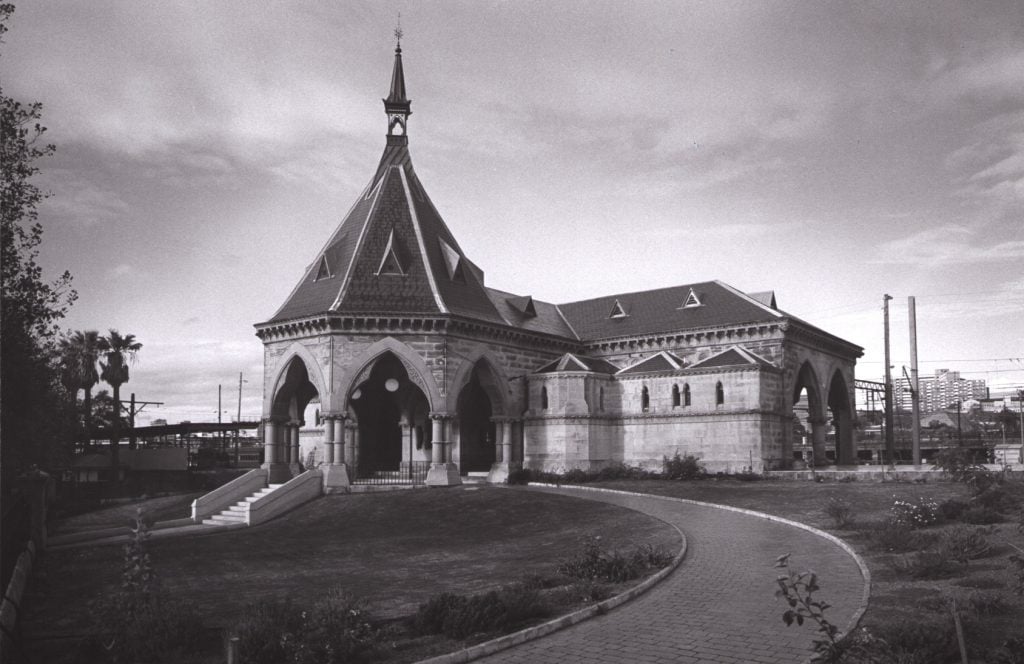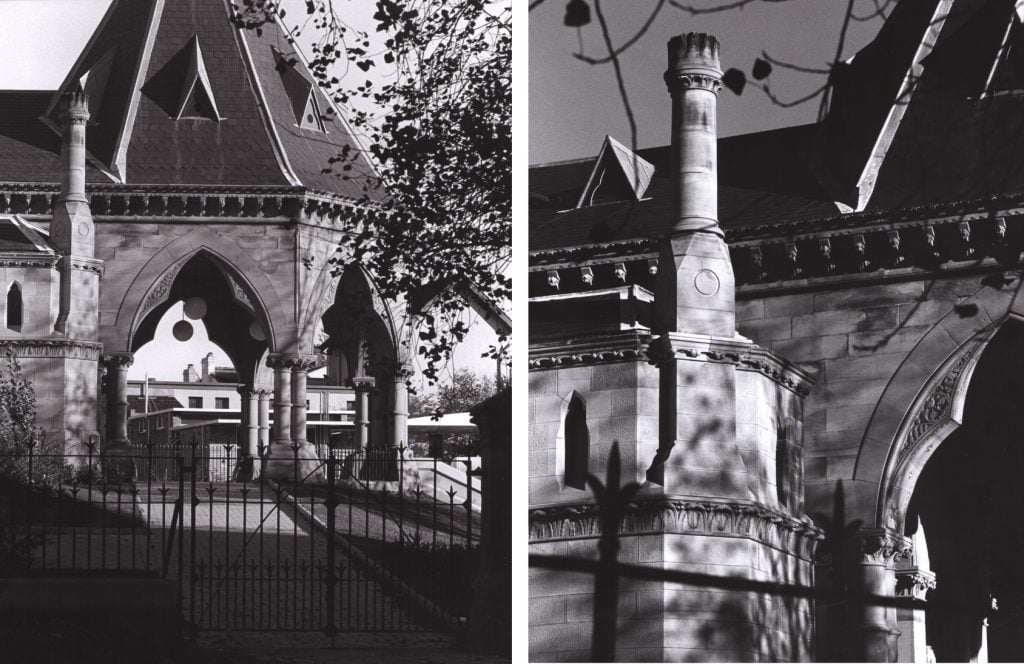The curious history of Mortuary Station in Chippendale.
With ornately carved sandstone columns and soaring Gothic-revival arches, Mortuary Station is an imposing structure and a building befitting of the significant role it once played in the city. Officially opened in June 1869, the station was purpose-built to serve as the final departure point for many of the deceased of Sydney. Until 1938, both coffins and mourners were carried from Mortuary Station by the special funeral train to Rookwood Necropolis, where the dearly departed were laid to rest on the western outskirts of the city.
Rookwood Necropolis was originally established in 1867 out of practical necessity. By the mid-19th-century the colony’s original burial grounds in Sydney had almost reached capacity and church leaders began to petition the NSW Colonial Secretary to create a new cemetery on the border of the city. In 1855 a railway line from Sydney to Parramatta opened and plans were made for an adjacent burial ground. In 1862 the NSW government purchased 200 acres of land at Haslam’s Creek and five years later the site opened as the new eternal resting place of Sydney.

Initially known as the Necropolis or Haslam’s Creek Cemetery, the name changed to Rookwood Necropolis when the surrounding area was renamed Rookwood in 1876. Ironically the suburb’s name change was an unsuccessful attempt to dissociate the area with the expanding burial ground. It wasn’t until 1913 that the suburb managed to finally distance its name from the burial site, becoming Lidcombe, while Rookwood Necropolis retained its title. Encompassing multiple faiths, Rookwood is the largest burial ground in the Southern Hemisphere and remains the world’s largest Victorian-era cemetery still in operation today.
Constructed between 1868 and 1869, Mortuary Station was commissioned by the NSW government as a grand city terminus for the funeral trains. A twin station was also built at Rookwood to receive the coffins and accompanying mourners into the Necropolis. Both stations were the work of James Barnet, Australia’s longest serving colonial architect, whose prolific legacy also includes buildings such as the NSW Lands Department Building and General Post Office. Mortuary Station was constructed from white and biscuit-brown varieties of Pyrmont sandstone and featured ecclesiastical detailing including cherubs, angels and gargoyles.
An open turret housed the funeral bell which would toll to alert mourners of the impending departure of the funeral train which ran to a morning and afternoon service. Two types of hearse carriages were employed, the largest holding up to 30 coffins the smaller 10, and while mourners paid for their travel, the deceased took their last journey for free.
At the time that Mortuary Station was constructed, most journeys were carried out on foot, and the funeral railway line served an important purpose for carrying both mourners and the deceased to the outskirts of the city for burial and from 1925, cremation. The advent of the motor vehicle however led to road transport overtaking the funeral rail line as the primary method of making the journey to Rookwood Necropolis and the funeral rail service from the city ceased in 1948.

While the station at Rookwood Necropolis was sold and then dismantled in the 1950s (it was rebuilt stone-by-stone and became All Saints Church in Ainslie, Canberra) Mortuary Station still stands today. After hearse rail services from the Chippendale station ended in 1938, the building became a dispatch for animals, primarily horses and dogs, before becoming a parcel depot and then finally a pancake restaurant. The restaurant, which was housed in railway carriages, had a short-lived tenure of just three years. Its closure perhaps signalling that the public didn’t have an appetite for dining in a place long associated with the dead.
Today Mortuary Station remains a window into Sydney’s past, a historic structure with a grand yet sombre appearance that provokes a curious backwards glance when spotted by commuters rushing past. The National Trust has argued that it could once again be activated as part of the nearby renewal of Chippendale and Central Park, providing another entrance point to the broader Central Station precinct.

 Facebook
Facebook Linkedin
Linkedin Email
Email
Fascinating. I thoroughly enjoyed reading about Mortuary Station, this is a building about which I have always been curious. Thank you.